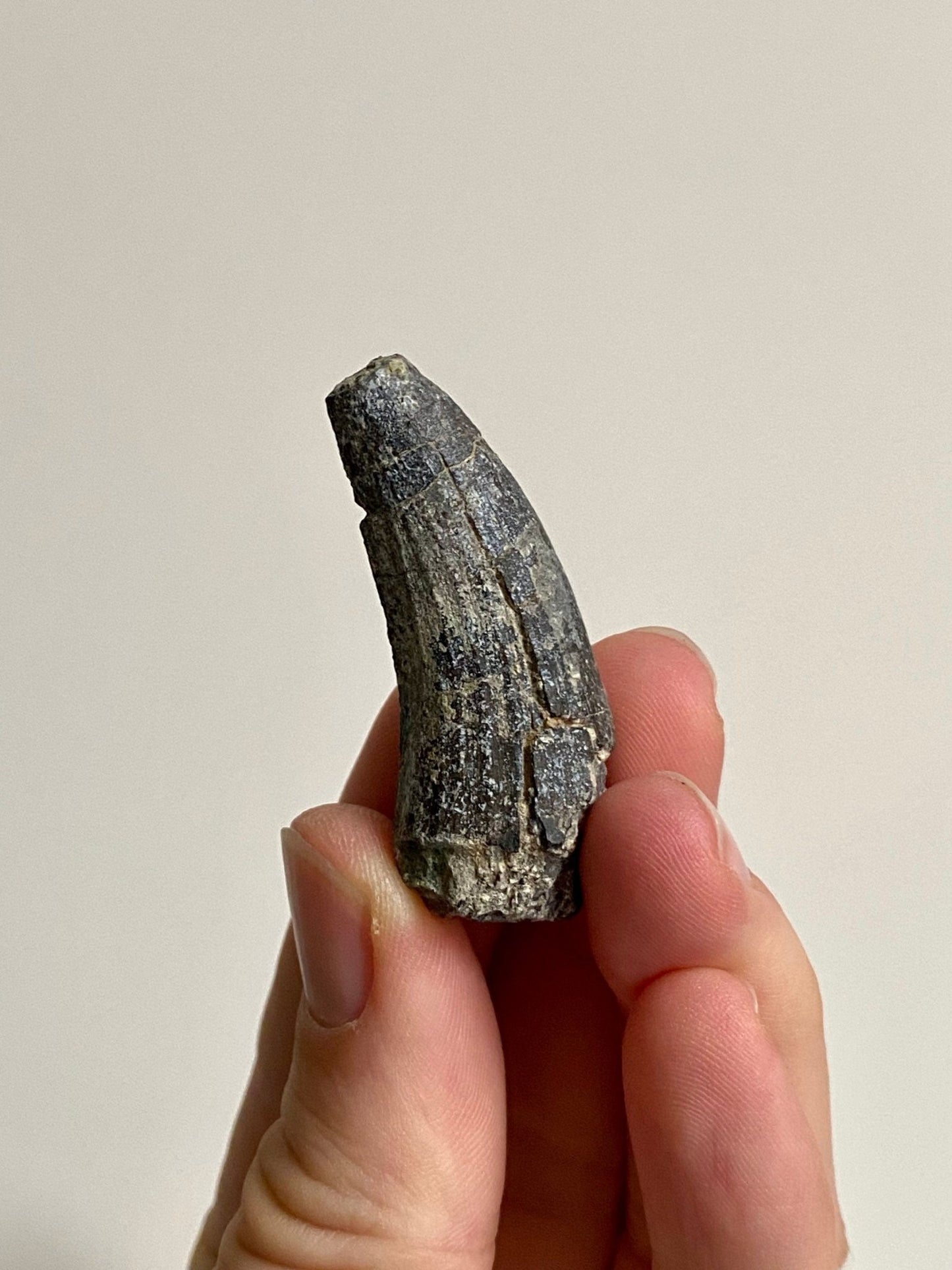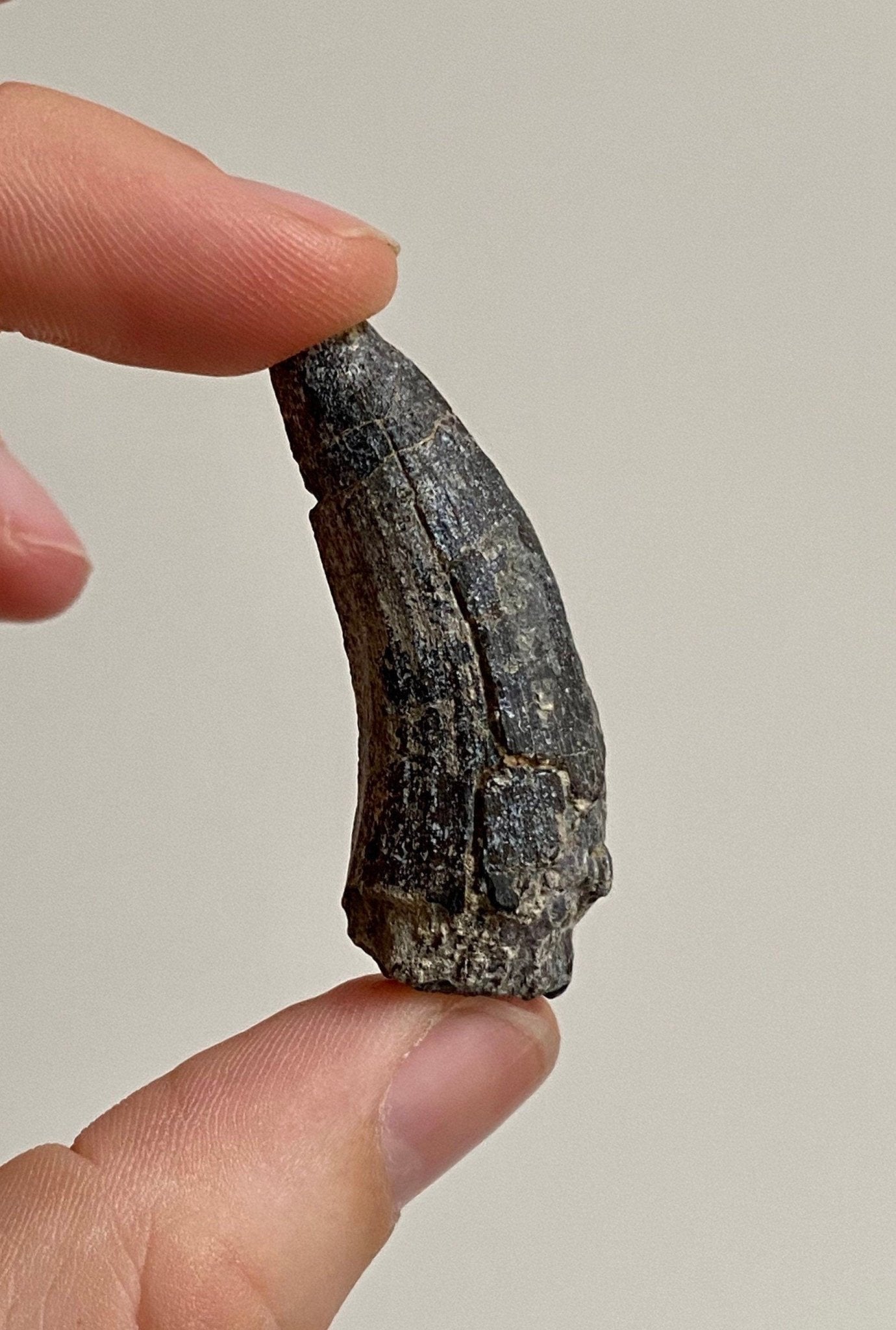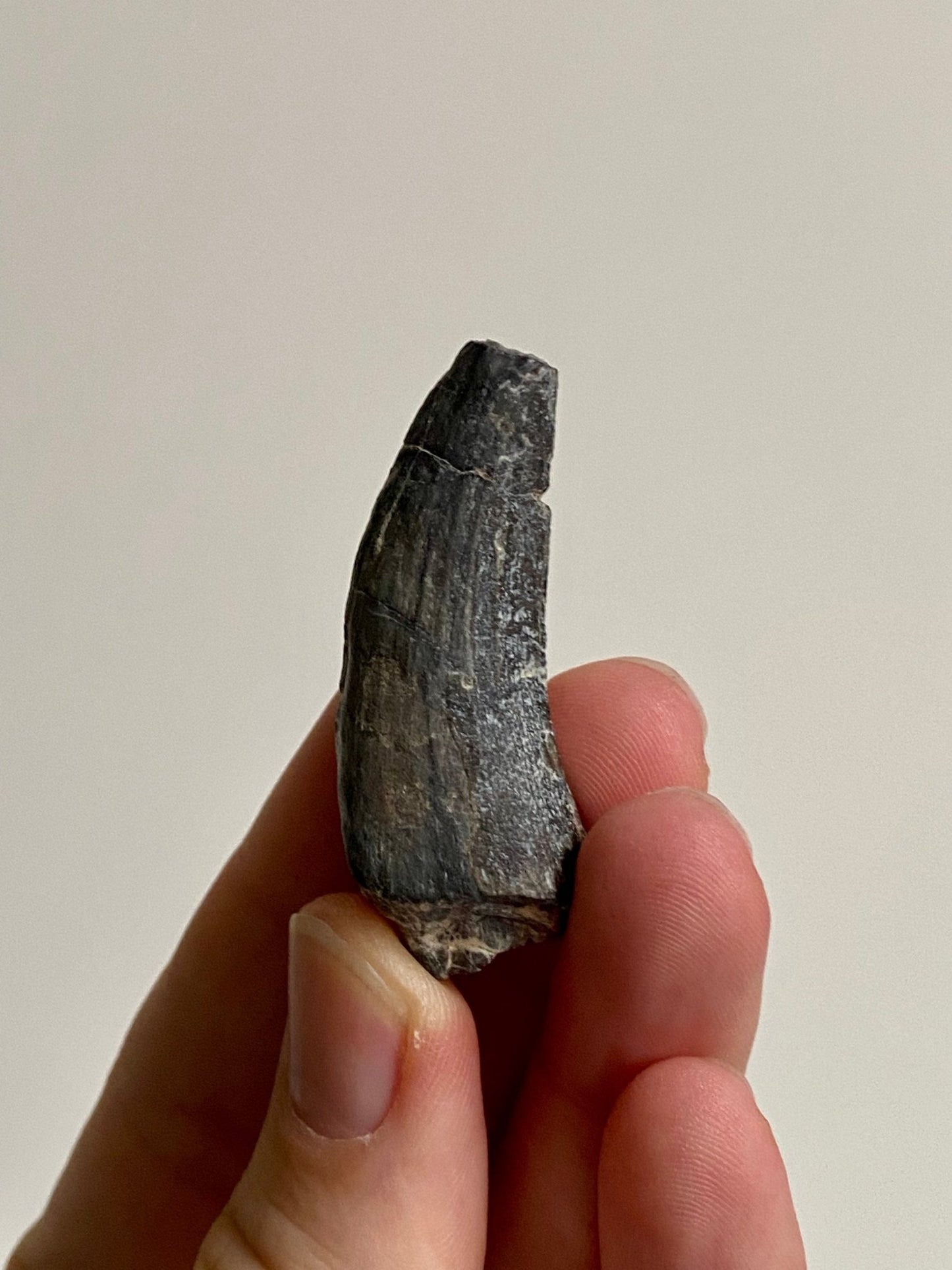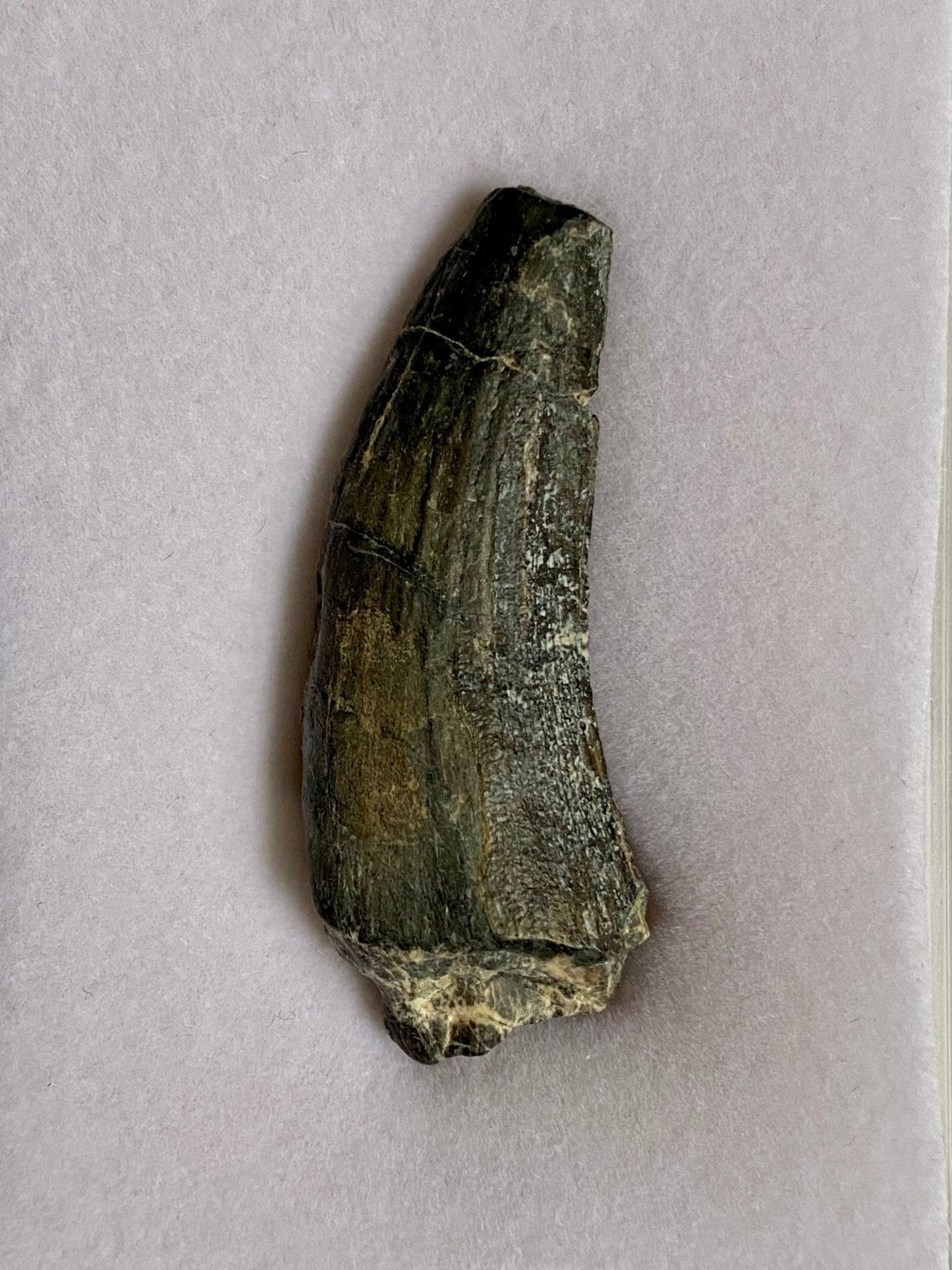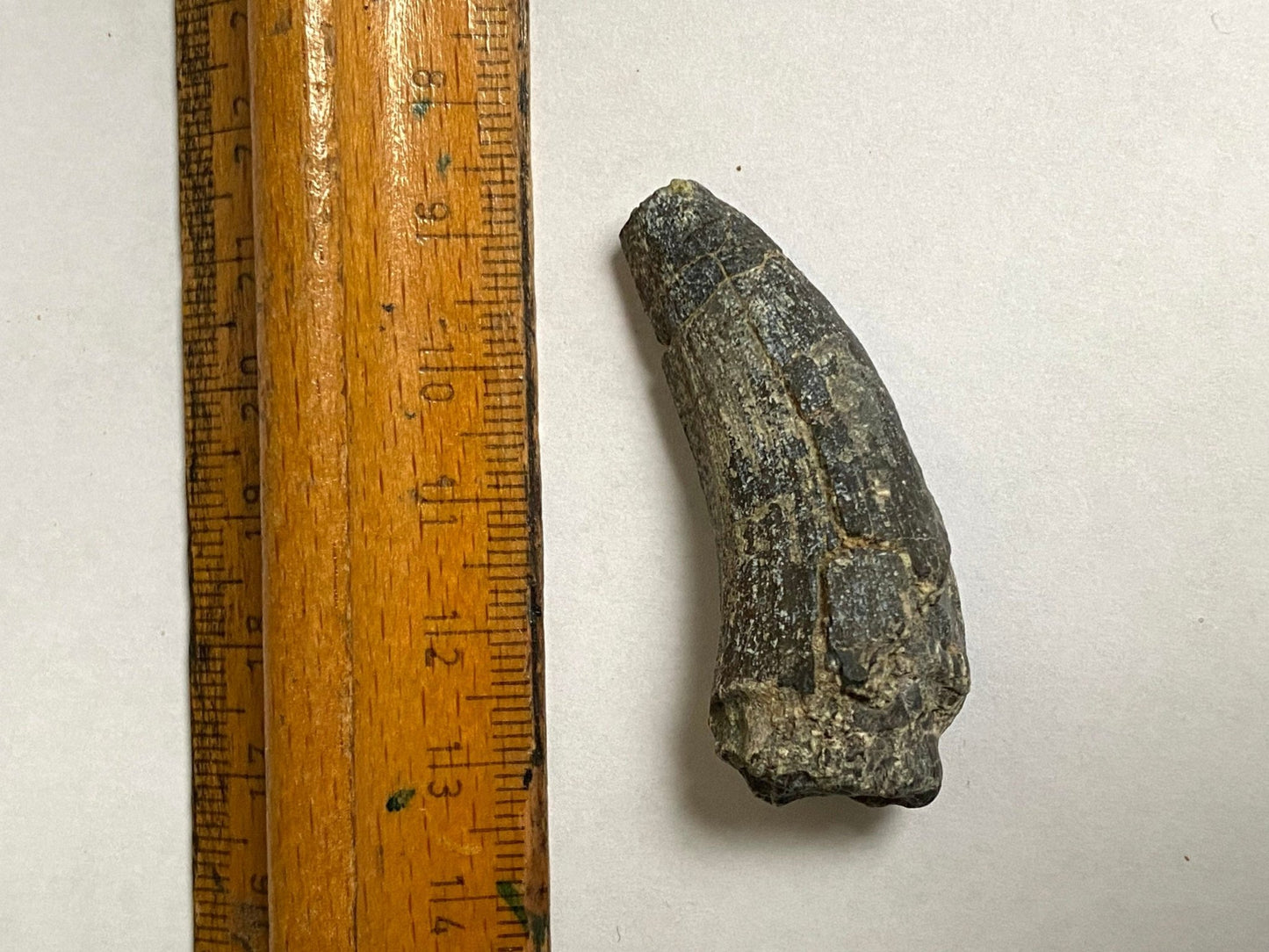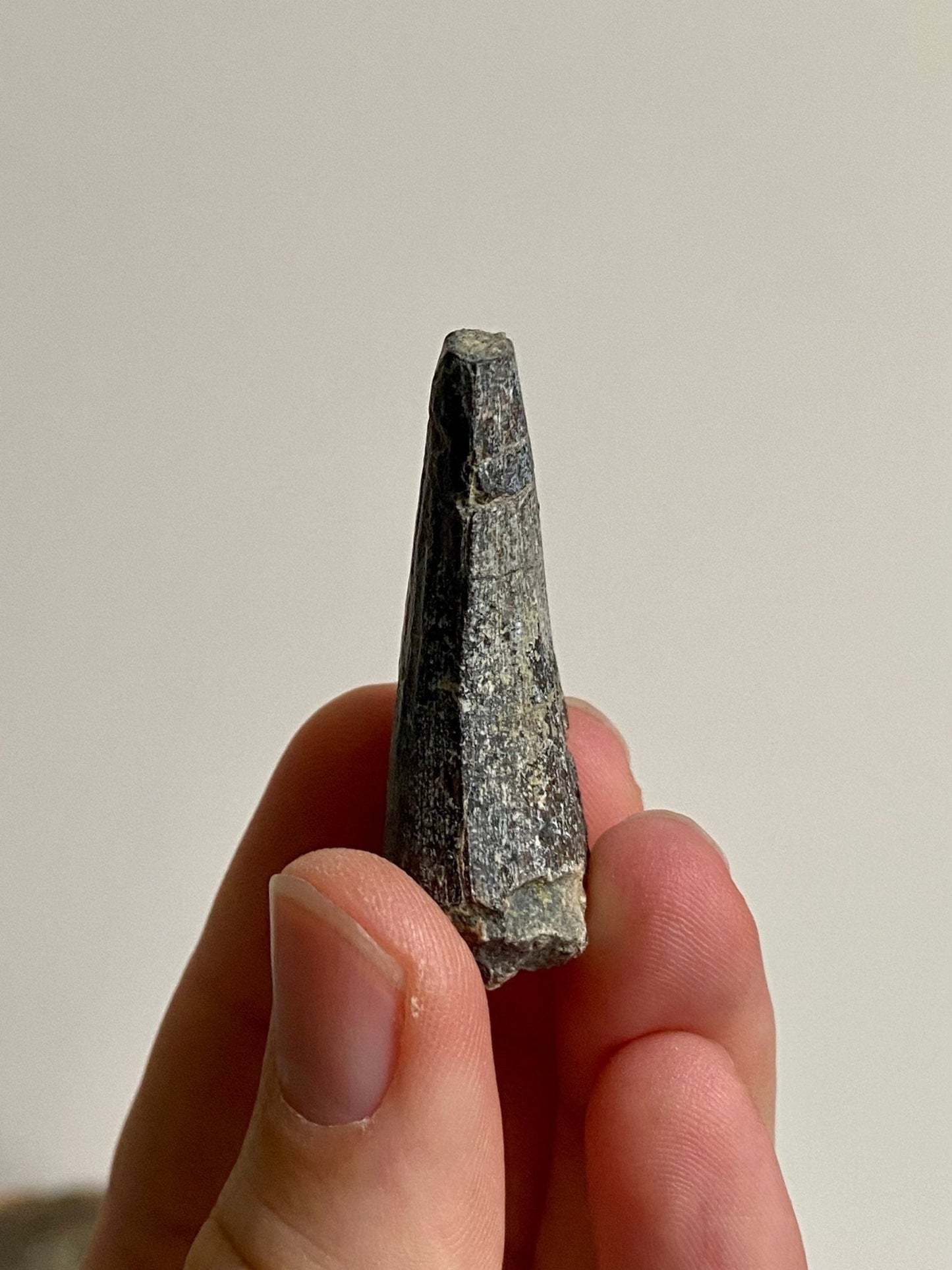1
/
of
7
Suchomimus fossil tooth (4.8), genuine fossil dinosaur tooth from Niger
Suchomimus fossil tooth (4.8), genuine fossil dinosaur tooth from Niger
Regular price
€110,00 EUR
Regular price
€140,00 EUR
Sale price
€110,00 EUR
Unit price
/
per
Tax included.
Shipping calculated at checkout.
Couldn't load pickup availability
Shipping rates & times
Shipping rates & times
| Destination | # days** | Rate |
| USA | 5 - 7 | $25 |
| Mainland Europe | 3 - 5 | €12,95 |
| Non-EU Europe | 5 - 7 | €14,95 |
| Domestic | 1 - 2 | €6,95 |
| Other* | 15 - 20 | €23,95 - €45 |
* Please note a few countries are currently not available for shipping
** Average number of business days in transit
Rare Suchomimus tooth (4.8), genuine fossil tooth from Niger
Suchomimus is a genus of spinosaurid theropod dinosaur from the Early Cretaceous.
Fossil dating back +/- 112 million years ago from the Cretaceous era. Found in Elrhaz formation, Niger
Size: 4.8cm in length
Suchomimus is an intriguing dinosaur that once prowled ancient riverbanks. This Spinosaurid from the Early Cretaceous period possessed a unique blend of features, with a long snout resembling that of a crocodile and a sail-like structure on its back. Its name, meaning is fitting for its aquatic lifestyle and likely diet of fish. Suchomimus' robust arms and curved claws indicate adaptations for hunting and fishing in the water. Imagining this remarkable creature wading through prehistoric wetlands offers a glimpse into the diverse adaptations that evolved in Earth's ancient ecosystems.
View full details
Suchomimus is a genus of spinosaurid theropod dinosaur from the Early Cretaceous.
Fossil dating back +/- 112 million years ago from the Cretaceous era. Found in Elrhaz formation, Niger
Size: 4.8cm in length
Suchomimus is an intriguing dinosaur that once prowled ancient riverbanks. This Spinosaurid from the Early Cretaceous period possessed a unique blend of features, with a long snout resembling that of a crocodile and a sail-like structure on its back. Its name, meaning is fitting for its aquatic lifestyle and likely diet of fish. Suchomimus' robust arms and curved claws indicate adaptations for hunting and fishing in the water. Imagining this remarkable creature wading through prehistoric wetlands offers a glimpse into the diverse adaptations that evolved in Earth's ancient ecosystems.
